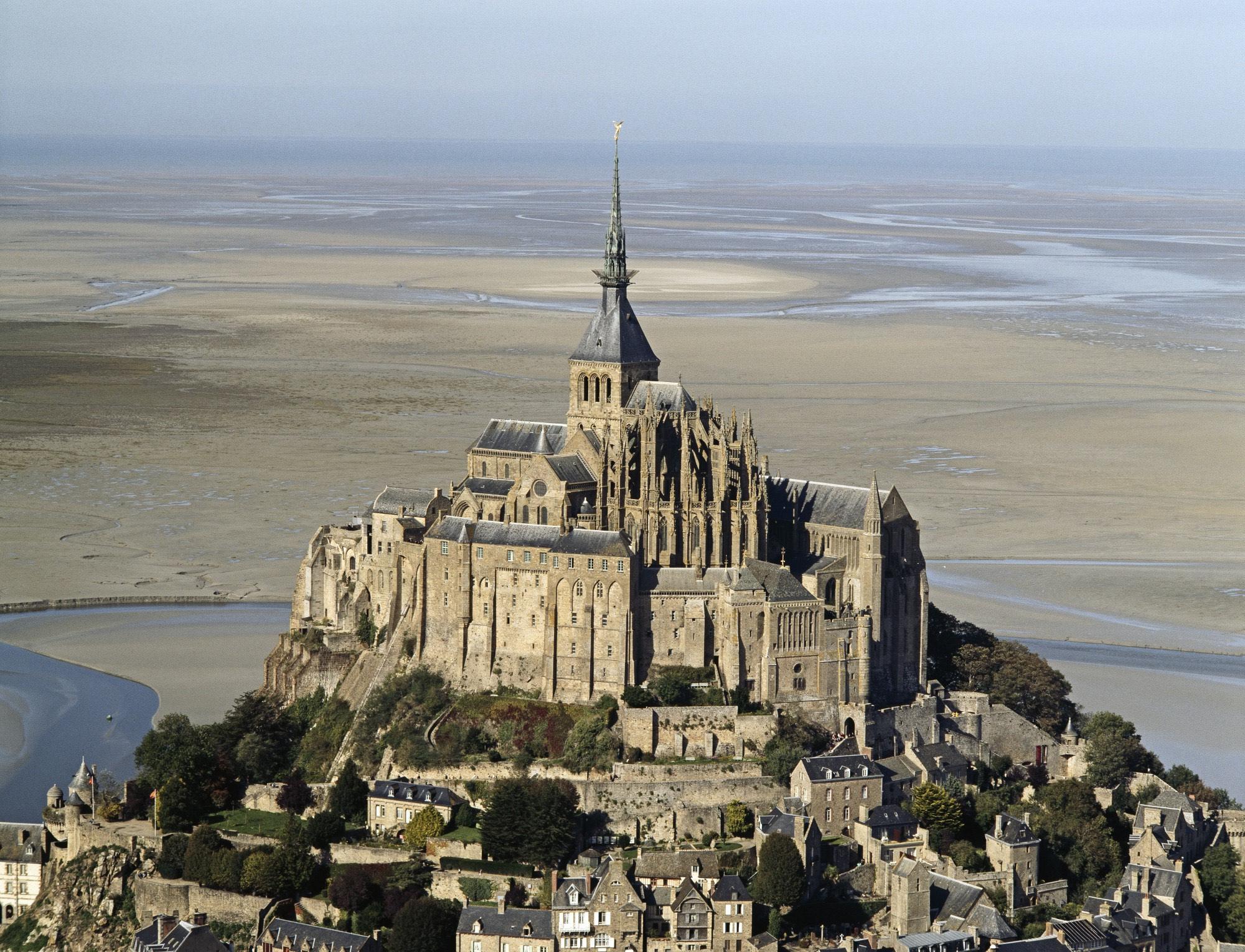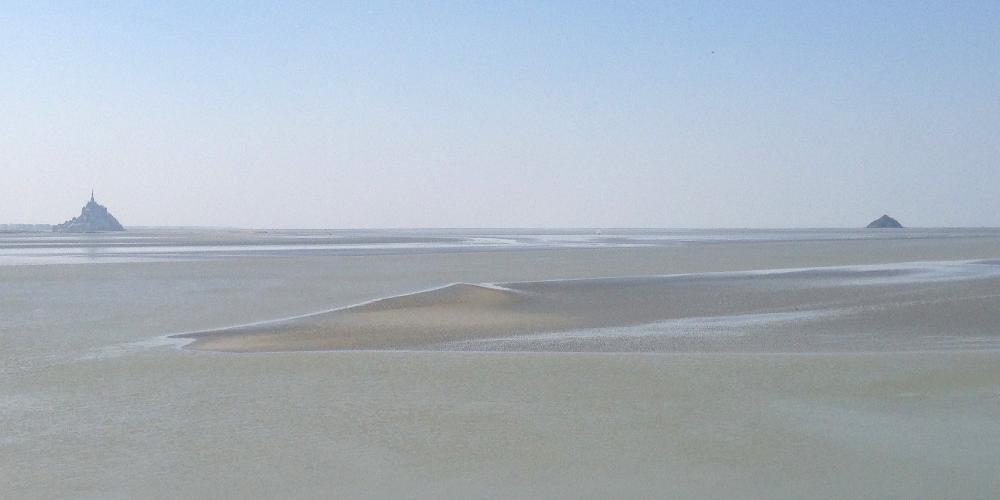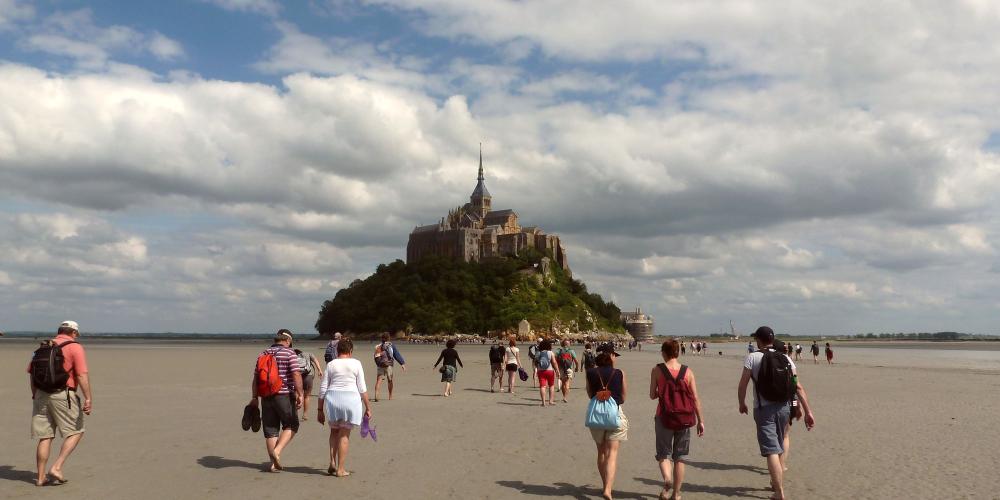The Bay of Mont Saint-Michel

Not only is Mont Saint-Michel justly famous for its architectural and cultural heritage, the surrounding bay also enjoys an extraordinary biodiversity. The Bay of Mont Saint-Michel, between Cancale and Granville, occupies some 500 km². The vast mud-flats and salt-marshes are home to a great number of birds such as the avocet, an elegant wader that feeds on small invertebrates, and the osprey, a rare fish-eating bird of prey. In springtime, the small parsley frog sings its surprising song that resembles a creaking door.
The Bay's exceptional tidal range (difference between the highest and lowest point of the water), which can reach 15 metres during spring tides, and the great variety of tidal environments, supports the emergence and development of many plant and animal species. A third of the Breton flora thrives among the mudflats, in freshwater and saltwater marshes, groves, dunes, rocky coasts, deep waters, polders and rivers.

There are over 130 species of birds in the Bay, which is a favoured breeding ground for gulls and sparrows. It is also a moulting area for the black scoter, a stopover for some migratory birds and a refuge for the wigeon or the bean goose when the weather is particularly cold.
In the sea, honeycomb worms, have built large-scale reef areas: “Le Banc des Hermelles” is the most extensive animal "bio-construction" in Europe, its surface area reaching more than 100 hectares.
About a hundred different fish species populate the waters of the Bay, a true nursery for the sole, the ray, the seabream, and the seabass,.... The waters of the bay are also visited by migratory fish such as the salmon and eel.
The abundance of fish also benefits predator species such as dolphins and seals that thrive in the Bay.



